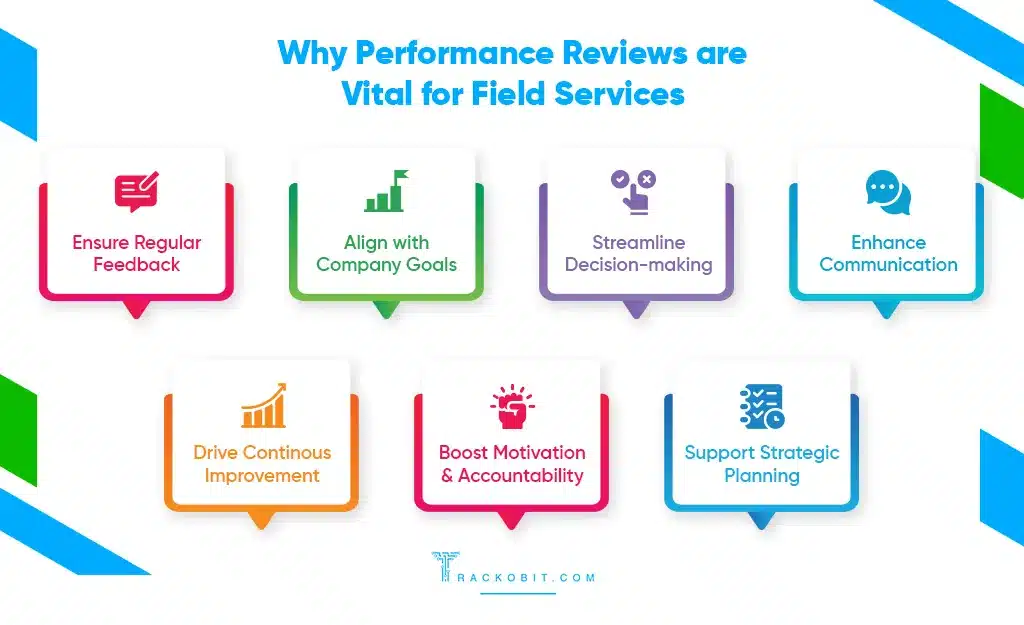-
TrackoBit
Manage commercial vehicles with the new-age Fleet Management Software
TrackoBit -
TrackoField
Streamline your scattered workforce with Field Force Management Software
TrackoField -
Features Resources
-
Blog
Carefully curated articles to update you on industrial trends. -
White Paper
Insightful papers and analysis on essential subject matters. -
Glossary
Explore an alphabetical list of relevant industry terms. -
What’s New
Get TrackoBit & TrackoField monthly updates here. -
Case Study
Explore the cases we solved with our diverse solutions. -
Comparisons
Compare platforms, features, and pricing to find your best fit.
-
About Us
Get to know TrackoBit: our team, ethos, values, and vision. -
Careers
Join the most dynamic cult of coders, creatives and changemakers. -
Tech Support
Learn about our technical support team and services in detail. -
Events
Check out the exhibitions where we left our marks and conquered. -
Contact Us
Connect with us and let us know how we can be of service.
Employee Performance Reviews – What it is & Why it Matters
- Author:Shivani Singh
- Read Time:8 min
- Published:
- Last Update: July 30, 2025
Table of Contents
Toggle
Struggling to piece together field employees’ productivity? Learn how employee performance tracking software helps streamline reviews and maximize outputs.
Table of Contents
Toggle
Ever tried finding a needle in a haystack? That’s what it is like for field managers who want to assess employees’ performance without the right tools.
It’s tough to know how productive employees are on-site without accurate data. Tracking their arrival and departure times and measuring task efficiency– it’s nearly tough.
That’s where the field employee tracking software steps in, letting you access detailed reports on:
- How long each task takes
- Who is meeting their targets
- How working hours are utilized
The advantage of having the software at your fingertips goes beyond just streamlining employee performance reviews. Read on to learn how it helps you monitor every aspect of your team’s work.
What is an Employee Performance Review?
By employee performance review, we mean a structured assessment process that lets managers evaluate an employee’s productivity in the field. It serves as a comprehensive overview of an employee’s strengths and areas for improvement. Thus, enabling managers to make informed decisions about necessary training programs.
Evaluating employee productivity is a cornerstone of organizational success. Because it provides insight into areas that require attention, helping organizations enhance overall efficiency and effectiveness. In field service operations, these reviews involve a detailed analysis of employees’ past performance by leveraging various metrics and reports.
However, it’s important to note that the accuracy of these reports can sometimes be questionable, especially when data is manually collected. Inaccurate data can lead to a misinformed evaluation, therefore you need a reliable employee productivity system.
Employee Performance Review Process in Field Service Operations – With/Without Software
Here is a breakdown of the employee performance review process in field service operations with and without employee productivity tracking software.
Employee Performance Review with/without Software
Without Employee Tracking Software
1. Inaccurate Timings
Without software to track punch hours and work hours, issues like extended breaks, buddy punching, time theft, and absenteeism go unchecked, leaving you unable to accurately measure productivity.
2. No Real-time Insights
Managers lack up-to-the-minute information about employees’ locations, activities, and task status, making it challenging for them to respond to issues promptly.
3. Poor Task Tracking
Manual task tracking via calls leads to incomplete or inconsistent records of task progress, bringing challenges in productivity and efficiency evaluation.
4. Training Gaps
Without data beforehand on employee performance, identifying and addressing specific training needs becomes a guessing game, potentially leaving gaps in training.
5. Hard to Spot Weaknesses
It’s difficult to pinpoint areas where employees are underperforming without detailed performance metrics and analytics.
With Employee Tracking Software
1. Automated Time Monitoring
The software automates time tracking once they enter the geofenced task site, helping managers verify that employees are properly utilizing their working hours.
2. Real-time Insights
Managers get updates about employees’ locations, task status, and activities in real-time, allowing for quick adjustments and informed decision-making.
3. Efficient Task Tracking
With clear records of task progress and metrics like target vs. achievement reports, managers evaluate productivity on an operational level and ensure the timely completion of assignments.
4. Streamlined Training
The software incorporates data-driven insights, useful for tracking employees’ performance, helping specify training needs and effective programs.
5. Shortcoming Evaluation
KPIs, metrics, and reports help highlight areas of weakness, making it easier to address issues and improve overall efficiency.
What are the Common Types of Employee Performance Reviews?
Now, after evaluating the importance of accurately tracking employee performance, ensure to explore its common types.
1. Weekly or fortnightly performance evaluation
For such evaluations, you don’t require storing a vast amount of data. Instead, you need weekly insights on employees’ performance to assess their progress at the weekend. This is helpful for record-keeping, ensuring that the fast-moving project stays on track.
2. Monthly performance appraisals
Companies that hire freelancers or contractors for short-term tasks often prefer conducting monthly employee performance reviews. This approach helps them assess how employees are performing within that specific period. Additionally, companies working on new projects also favor employees’ monthly performance evaluations to meet their goals.
3. Quarterly performance evaluations
Some companies believe that 3 months is ample time for an employee to achieve their goals and refine their skills. To this end, they divide their business year into 4 quarters such as Q1, Q2, Q3, and Q4. By conducting quarterly performance evaluations, they can systematically assess and review employees’ progress throughout the year.
4. Semi-annual performance review
This review is usually conducted twice a year– once at the start and again at the sixth month of the year. Through careful analysis, companies assess both opportunities and areas of weakness. This allows them to take corrective actions and make necessary adjustments to their plans.
5. Annual performance review
The annual performance review is widely used in field service operations to assess employee productivity over the year. It lets companies evaluate KPIs like task completion rates, actual working hours, and overall productivity to identify trends in performance and make decisions about additional training needs, promotions, or raises.
The Importance of Employee Performance Reviews in Field Service Operations
Imagine driving the vehicle without a map or GPS, challenging isn’t it? Managing field employees without regular performance reviews is similarly challenging. These reviews are your guiding light, helping you ensure the desired productivity to achieve operational success.

Importance of Employee Performance Reviews
1. Regular Feedback about Performance
Regular feedback about performance keeps employees on track and motivated. It allows managers to address issues promptly, celebrate success, and implement more strategic training programs. This ongoing dialogue fosters a culture of continuous improvement and helps employees stay aligned with organizational goals. Thus, ultimately leading to better employee retention and higher job satisfaction.
2. Alignment with Organizational Goals
Employee performance tracking is crucial for ensuring that each team member understands and contributes to the organization’s goals and vision. When employees are aware of how their performance impacts broader objectives, they are more likely to stay motivated and focused on achieving those goals. This fosters a sense of purpose among employees and drives the company towards its long-term vision.
3. Enhanced Communication
With reports generated by employee performance tracking software, managers can have an open discussion with employees. They can set up a constructive conversation to identify reasons behind employees’ performance shortfalls. This streamlines communication and aligns everyone on performance expectations and productivity levels.
4. Informed Decision Making
The employee performance tracking software provides a detailed insight into employees’ performance throughout the day, week, month, or year. This not only helps identify the requirement for necessary training needs but also lets managers detect skill gaps and areas for improvement. In summary, this leads to a more unified and effective digital workforce.
5. Continuous Improvement
With the insights from performance tracking software, you, as a manager, can drive continuous improvement within your team. For instance, you can ensure that employees are effectively utilizing their working hours. This helps you foster an environment where regular feedback leads to skill enhancement and increased productivity. This ongoing development again leads to elevated service delivery and overall success.
6. Motivation and Accountability
The field employee performance tracking software features various KPIs and metrics like targets vs. achievement reports, on-duty vs. actual working hours reports, etc. With these KPIs, you can recognize and reward those employees who complete their assigned targets and dedicatedly utilize their working hours. This way you can identify top performers, keep motivation high within the team, and reinforce positive behavior.
7. Future Planning
With the comprehensive performance data right before their eyes, managers can make informed decisions about team structuring, project assignments, resource allocation, etc. Moreover, they can identify knowledge and skill gaps within the team. This information is crucial for future planning related to hiring and training needs.
Why Traditional Performance Tracking is Not the Right Approach
Traditional performance tracking falls short claimed by these stats sourced from the Journal of Industrial and Organizational Psychology.
- 95% of total managers are not satisfied with their traditional PM systems.
- Even 59% of employees affirm that performance management is not worth the time invested.
- 56% of employees claimed that they don’t receive any feedback on what improvements they need to make.
- Also, 90% of human resources heads believe that traditional performance management systems do not store accurate information.
These points highlight the significance of a modern employee performance tracking system, which provides essential data to evaluate the productivity of employees periodically.
Also, performance reviews for employees are essential in this time and age. Because, it is only through which they get to learn how many targets they have achieved, what improvements they have made, and what weaknesses they possess. With all these analyses at their fingertips, employees can improve their weaknesses and use their strengths for improved service delivery and overall streamlined operations.
Performance Review Examples: Get Started with Employee Evaluation
Here are some employee performance review examples to help keep organizational goals focused and productive. These examples will serve as the foundation for ensuring team evaluation while fostering growth and accountability.
Accomplishing Goals
- Make challenging goals for your team
- Help the team achieve their objectives
- Prioritize work based on your organization and customer’s needs
- Achieve objectives despite challenges and bottlenecks
Leadership Qualities
- Guide team members in resolving their work-related problems
- Hold the team accountable for attaining their objectives
- Consider team members’ ideas while making decisions.
Communication
- Communicate with team members based on productivity reports
- Actively listen to your team members to ensure a clear understanding
Choose TrackoField as the Employee Productivity Tracking Software
With countless options claiming to be the best for tracking field employee performance, it can be tough to find one that truly delivers on its promise.
But, here is TrackoField, providing real-time employee tracking with precision insights into where your team is and how long they spend on each task. It also features a distance and duration breakup tool, allowing you to see exactly how long employees spend traveling between sites.
Beyond tracking, TrackoField’s additional features help automate the entire field operations. Sign up for free to explore how the software enhances employee performance reviews.
Frequently Asked Questions Related to Employee Performance Tracking
-
What do you mean by employee performance review?
Employee performance review depicts the strengths and weaknesses of field employees. It refers to analyzing employees’ past or current work status, productivity levels, and task completion rates, helping assess employees’ actual performance in a certain project during their working hours.
-
Why are employee performance reviews important?
When it comes to field operations, performance reviews' importance is undeniable. They help managers spot top performers, address workflow issues, and ensure everyone is aligned with organizational goals, maintaining high productivity standards.
-
What are the major types of performance reviews?
Performance reviews majorly consist of five types, such as weekly or fortnightly performance evaluations, quarterly performance evaluations, semi-annual performance reviews, monthly performance appraisals, and annual performance reviews.
Shivani is a Content Specialist working for TrackoField. She comes with years of experience writing, editing and reviewing content for software products. Her underlining expertise in SaaS especially H... Read More
Related Blogs
-

Unified Field Workforce Dashboard: Monitor Tasks, Attendance & More In One Place
Mudit Chhikara December 15, 2025Bring full clarity to field operations with a single, real-time field workforce dashboard.
-

Loan Disbursement in NBFCs: From 15 Days to 3 Minutes – Learn How
Shemanti Ghosh December 11, 2025TrackoField’s AI-enabled field force automation software speeds up loan disbursals in NBFC with field agent task monitoring and facial attendance…
-

AI Facial Recognition Attendance: A Game-Changer for Fraud-Free Field Operations
Mudit Chhikara December 9, 2025Ensure transparent attendance and eliminate fraud before it even starts with AI facial recognition and geofencing.
-

Boost Agri-Input Sales Efficiency with TrackoField’s Sales Order Management Module
Shemanti Ghosh December 3, 2025Grow Agri-input sales and expand farmer database with TrackoField’s Sales Order Management module.

Subscribe for weekly strategies to boost field team productivity.
Your inbox awaits a welcome email. Stay tuned for the latest blog updates & expert insights.
"While you're here, dive into some more reads or grab quick bites from our social platforms!"Stay Updated on tech, telematics and mobility. Don't miss out on the latest in the industry.
We use cookies to enhance and personalize your browsing experience. By continuing to use our website, you agree to our Privacy Policy.


































